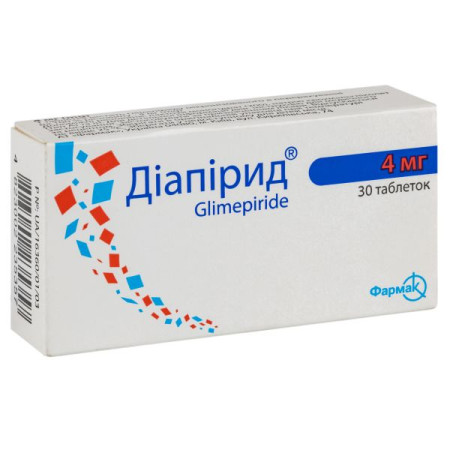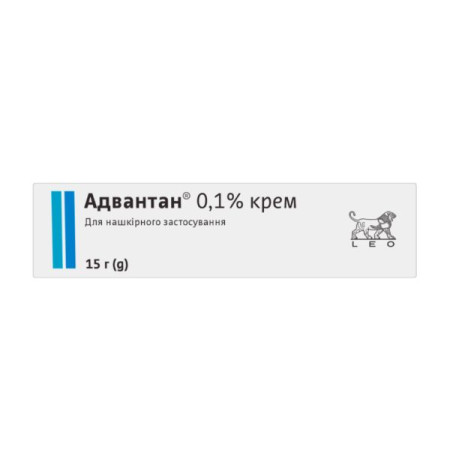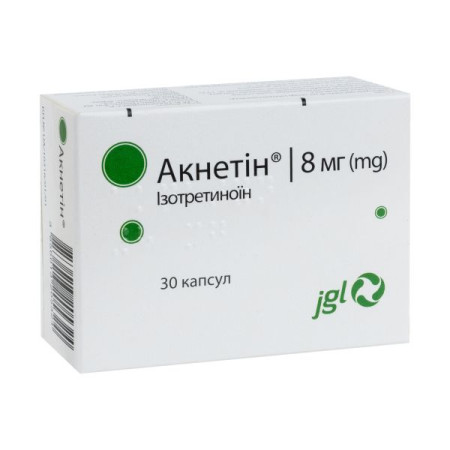Xypogam tablets 40 mg No. 30

Pharmacological properties
Pharmacodynamics. Xipamide is a diuretic that inhibits reabsorption in the distal tubule of the nephron and initially leads to the excretion of chlorine and sodium, then to polyuria due to osmotically bound water. Due to the increase in the current in the distal tubule, potassium secretion is stimulated. The excretion of bicarbonate, calcium and magnesium also increases. The mechanism of action of Xipamide differs from thiazides, despite the structural relationship. Xipamide does not affect renal hemodynamics, the glomerular filtration rate. The diuretic effect occurs after 1 hour and reaches its maximum between the 3rd and 6th hours. The excretion of chlorine and sodium is carried out for 12-24 hours, so there is no rebound effect. The maximum dose of Xipamide is 5 mg (oral). If the dose of 80 mg is exceeded, there is no further saluresis and diuresis.
The hypotensive effect of xipamide occurs at the beginning of treatment. The maximum blood pressure-lowering effect is achieved after 2-3 weeks.
Pharmacokinetics. Approximately after 1 hour C max of xipamide in blood plasma is reached. The ability to bind to proteins is 99%. T ½ is 7 hours. Oral resorption of xipamide is complete.
In renal failure, T½ increases to 9 hours; in liver cirrhosis, despite the increased level of xypamide in the blood plasma, it remains unchanged.
Renal excretion of unchanged substance is 30-40%. Extrarenal excretion (only about ⅔ of natural xypamide) is carried out half by glucuronidation. The inactive metabolite formed in this way is excreted through the kidneys, the rest - through the intestines.
Indication
Ag. cardiac, renal and hepatogenic edema.
Application
Adults should take 10-20 mg of xipamide once a day for both angina and edema.
For the treatment of edema, the dose may be 40 mg of xipamide. In case of significant renal impairment, the daily dose of xipamide may be increased to 80 mg.
Increasing the dose above 80 mg of xipamide per day is not recommended.
After the edema is eliminated, you can switch to a dose of 20 or 10 mg of xipamide to prevent relapses.
After prolonged treatment, the drug should be gradually discontinued.
Swallow the tablets whole with a sufficient amount of water (approximately 1 glass), preferably in the morning after breakfast.
Impaired liver function. In case of impaired liver function, the dose of Xypamide should correspond to the degree of functional impairment.
Reduced cardiac function. In severe cardiac decompensation, the absorption of xypamide may be significantly limited.
Contraindication
Hypersensitivity to Xypamide, other sulfonamide derivatives or thiazides or other components of the drug; severe liver dysfunction (precoma and coma hepaticum); severe renal failure; untreatable hypokalemia; severe hyponatremia; hypercalcemia; hypovolemia; gout; hereditary galactose intolerance, lactase deficiency, malabsorption of glucose and galactose.Side effects
The frequency of adverse reactions is defined as follows: very common (≥10%), common (≥1% -10%), uncommon (≥0.1% -1%), rare (≥0.01% -0.1%), very rare (0.01% or unknown).
From the nervous system: often - headache, dizziness, fatigue, dry mouth, sweating.
Cardiovascular system: often - orthostatic hypotension, palpitations; at high doses, in particular in venous diseases, the risk of thrombosis and embolism increases.
From the digestive system: often - abdominal pain, spastic abdominal pain, diarrhea, constipation; acute cholecystitis with existing cholelithiasis; rarely - hemorrhagic pancreatitis; very rarely - jaundice.
Skin: allergic reactions, including itching, erythema, urticaria, chronic photosensitivity (discontinuation of therapy).
On the part of the organ of vision: rarely - minor visual impairment, increased degree of already existing myopia (termination of therapy).
From the side of the hematopoietic organs and lymphatic system: very rarely - thrombocytopenia, leukopenia, agranulocytosis, aplastic anemia (termination of therapy).
Mental disorders: often - apathy, lethargy, feelings of anxiety, excitement.
Metabolic disorders: rarely - hyperlipidemia. Latent diabetes mellitus may manifest. Elevated blood glucose levels may indicate the presence of diabetes mellitus in the patient.
From the urinary system: very rarely - acute interstitial nephritis.
Musculoskeletal system: often - muscle spasms and cramps.
Electrolyte and water balance: disturbances of water and electrolyte balance are frequently observed during treatment with Xypamide as a result of increased fluid and electrolyte excretion. Therefore, it is necessary to monitor the level of electrolytes (potassium, sodium and calcium).
Potassium intake is reduced or loss is increased in cases of vomiting, chronic diarrhea, and excessive sweating. Increased renal potassium loss may result in hypokalemia, which may manifest as neuromuscular symptoms (muscle weakness, paresthesias, paresis), gastrointestinal symptoms (vomiting, constipation, flatulence), renal symptoms (polyuria, polydipsia), and cardiac symptoms (e.g., impaired impulse generation and conduction). Severe hypokalemia may lead to paralytic ileus, loss of consciousness, or coma.
Due to increased sodium loss, patients may develop hyponatremia. The most common symptoms of hyponatremia are apathy, convulsions, loss of appetite, weakness, drowsiness, vomiting, and confusion.
Increased renal calcium excretion can lead to hypocalcemia. Hypocalcemia can cause tetany.
In case of increased renal excretion of magnesium, tetany or cardiac arrhythmias may occasionally occur.
As a result of fluid and electrolyte loss during xypamide therapy, patients may develop or worsen pre-existing metabolic alkalosis.
Increased levels of uric acid in the blood can lead to the development of gout in patients who are prone to it.
Excessive diuresis can cause dehydration. As a result - hypovolemia, hemoconcentration, occasionally - convulsions, loss of consciousness, vascular collapse, dizziness.
Other: rarely - anaphylactoid reactions.
Special instructions
The drug contains lactose monohydrate. Patients with rare hereditary problems of galactose intolerance, the Lapp lactase deficiency or glucose/galactose malabsorption should not take this drug.
Xipamide should not be used in cases of untreatable electrolyte imbalance, orthostatic dysregulation of blood pressure, central nervous system disorders, pancreatitis, changes in blood count (anemia, leukopenia, thrombocytopenia), acute cholecystitis, development of vasculitis, and worsening of existing myopia.
In case of liver disease, hepatic encephalopathy is possible. In this case, the drug should be discontinued immediately.
Prolonged excessive use of diuretics may result in pseudo-Bartter syndrome (extraadrenal hyperaldosteronism) with edema. Such edema is a manifestation of increased renin levels with subsequent secondary hyperaldosteronism.
Serum sodium levels should be checked before starting treatment and then regularly at regular intervals. Since a decrease in blood sodium levels may initially be asymptomatic, patients should be closely monitored, especially in the elderly and patients with cirrhosis.
Serum potassium levels. Hypokalemia may occur during prolonged treatment with Xypamide. Serum electrolytes (including potassium, sodium, calcium), bicarbonate, creatinine, urea and uric acid, and blood glucose should be monitored regularly. Potassium supplementation may be necessary in elderly patients who may not be able to absorb sufficient amounts of potassium.
Hypokalemia (blood potassium level 3.4 μmol/l) should be avoided, especially in cases of significant fluid loss (due to vomiting, diarrhea, or excessive sweating) and in risk groups, i.e. elderly patients; debilitated patients; patients who have repeatedly received drug treatment; patients with cirrhosis of the liver with edema and ascites; patients with coronary artery disease and heart failure. In such patients, hypokalemia increases the cardiotoxicity of cardiac glycosides and the risk of cardiac arrhythmias. It is necessary to monitor hypovolemia or dehydration, as well as electrolyte or acid-base imbalance. If necessary, temporarily discontinue treatment with Xipogamma.
Patients at risk include those with a prolonged QT interval, whether congenital or acquired. The presence of hypokalemia and bradycardia predisposes to serious cardiac arrhythmias, including potentially fatal torsades de pointes.
In all of the above cases, it is necessary to check the potassium level in the blood more often, with the first analysis being carried out in the 1st week of treatment. Hypokalemia must be corrected.
Blood calcium levels. Treatment with thiazide diuretics and related drugs may result in decreased urinary calcium excretion and a significant transient increase in blood calcium levels. Overt hypercalcemia may occur with hyperparathyroidism.
Treatment should be discontinued before testing parathyroid function.
Blood glucose levels: Blood glucose levels should be monitored in patients with diabetes, especially if there is concomitant hypokalemia.
Hypovolemia, caused by fluid or sodium loss due to diuretics at the beginning of treatment, leads to a decrease in glomerular filtration. This can lead to an increase in blood urea and nitrogen levels. This temporary functional renal failure in people with healthy kidneys does not have any consequences, but it can worsen existing renal failure.
In case of unsuccessful correction of electrolyte balance, treatment should be discontinued.
Use during pregnancy and breastfeeding. The use of xypamide during pregnancy and breastfeeding is contraindicated.
Children. Xipamide should not be used in children, as the safety and efficacy of the drug in this category of patients have not been established.
The ability to influence the reaction rate when driving vehicles or working with other mechanisms. Since the reaction to the drug is individual, the reaction rate may change to such an extent that the ability to drive a vehicle, balance may be impaired. This may be at the beginning of treatment, when increasing the dose and changing drugs.
Interactions
The following interactions that have been reported with thiazide diuretics and similar drugs may also occur with xypamide.
Combination not recommended for use
Lithium. With simultaneous treatment with lithium drugs, the cardio- and neurotoxic effects of lithium are enhanced. If diuretic treatment cannot be avoided, it is necessary to monitor the level of lithium in the blood and adjust the dosage.
Combinations requiring special precautions
Substances that can cause torsades de pointes:
Class Ia antiarrhythmics (e.g. quinidine, hydroquinidine, disopyramide); Class III antiarrhythmics (e.g. amiodarone, sotalol, dofetilide, ibutilide); Some antipsychotics: phenothiazines (e.g. chlorpromazine, cyamemazine, levomepromazine, thioridazine, triptorperazine), benzamides (e.g. sulpiride, sultopride, tiapride), butyrophenones (e.g. droperidol, haloperidol);others: bepridil, cisapril, diphemanil, erythromycin, halofantrine, mizolastine, pentamidine, sparfloxacin, moxifloxacin, vincamine i/v.
The risk of ventricular arrhythmia, torsades de pointes (with hypokalemia) increases.
Hypokalemia should be monitored and corrected if necessary before starting treatment with this combination. Plasma electrolyte levels and ECG monitoring are necessary.
Substances that do not induce torsades de pointes should be preferred if the patient is hypokalemic.
NSAIDs, including selective COX-2 inhibitors, high doses of salicylic acid (3 g/day). Possible reduction of the hypotensive effect of xipamide. Risk of acute renal failure in case of dehydration (glomerular filtration). Adequate fluid intake should be monitored and renal function should be monitored at the beginning of treatment. High-dose salicylate therapy may increase its toxic effect on the central nervous system.
ACE inhibitors. Risk of hypotension and/or acute renal failure with initiation of ACE inhibitor treatment in patients with pre-existing sodium depletion (particularly renal artery stenosis).
If treatment with Xypamide for arterial hypertension has led to a decrease in sodium levels, it is necessary:
or stop taking xipamide 3 days before starting treatment with ACE inhibitors and then add xipamide; or start treatment with ACE inhibitors at low doses and then gradually increase them.In decompensated heart failure, you should start with a very low dose of ACE inhibitors.
In any case, kidney function should be monitored (blood creatinine levels) in the first weeks of treatment with ACE inhibitors.
Other diuretics, antihypertensive drugs, β-adrenergic blockers, nitrates, vasodilators, barbiturates, phenothiazines, tricyclic antidepressants, alcohol. The hypotensive effect of xipamide may be enhanced.
Other agents that lower potassium levels: amphotericin B (IV), gluco- and mineralocorticoids (systemic administration), tetracosactide, stimulant laxatives. The risk of hypokalemia increases (additive effect). Plasma potassium levels should be monitored and corrected, particularly during treatment with cardiac glycosides.
Baclofen. Enhances the decrease in blood pressure. It is necessary to ensure adequate fluid intake and monitor renal function at the beginning of treatment.
Cardiac glycosides. Hypokalemia and/or hypomagnesemia, which increase the toxic side effects of digitalis glycosides. Monitoring of blood potassium levels and ECG is necessary.
Combinations where additional interactions are possible
Potassium-sparing diuretics (e.g. furosemide), corticosteroids, ACTH, carbenoxolone, penicillin G, amphotericin or laxatives. Concomitant use with xipamide may lead to increased potassium loss. With the simultaneous use of xipamide and loop diuretics (e.g. furosemide), the risk of developing fluid and electrolyte imbalance increases. Careful monitoring of the patient's condition is necessary.
Metformin: The risk of metformin-induced lactic acidosis is increased due to the possibility of functional renal failure during diuretic therapy, especially loop diuretics. Metformin should not be used if the blood creatinine level is 15 mg/L (135 μmol/L) in men and 12 mg/L (110 μmol/L) in women.
Iodine-containing contrast media: In the presence of diuretic-induced hydration, there is an increased risk of acute renal failure with the use of iodine-containing contrast media (particularly at high doses). Rehydration is necessary before the use of iodine-containing contrast media.
Tricyclic antidepressants (imipramine), neuroleptics. Hypotensive effect and increased risk of orthostatic hypotension.
Calcium (salts). Risk of hypercalcemia due to reduced urinary calcium excretion.
Cyclosporine, tacrolimus: Risk of increased serum creatinine levels.
GCS, tetracosactide (systemic use). Decreased hypotensive effect (fluid and sodium retention due to GCS).
Cytostatics (e.g. cyclophosphamide, fluorouracil, methotrexate). Risk of toxicity, particularly reduction in granulocyte count.
Antidiabetic drugs, drugs that lower serum uric acid levels, noradrenaline, adrenaline. The effect of these drugs may be weakened when taken simultaneously with xipamide.
Quinidine: Elimination of quinidine may be delayed.
Muscle relaxants (curare alkaloids). Enhanced and prolonged effect of muscle relaxants.
Colestipol and cholestyramine: The absorption of xypamide may be reduced.
Overdose
Acute intoxication is manifested primarily in a violation of water and electrolyte balance (hyponatremia, hypokalemia). Clinical manifestations may include nausea, vomiting, a sharp decrease in blood pressure, convulsions, dizziness, drowsiness, confusion, polyuria or oliguria up to anuria (due to hypovolemia).
Emergency measures: administration of activated charcoal. Restoration of water and electrolyte balance.
In case of overdose, you should immediately stop taking the drug and consult a doctor. Treatment is symptomatic.
Storage conditions
At a temperature of 25 °C.
There are no reviews for this product.
There are no reviews for this product, be the first to leave your review.
No questions about this product, be the first and ask your question.













